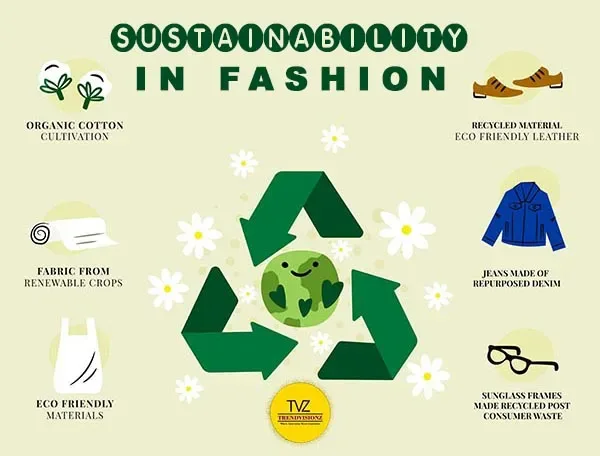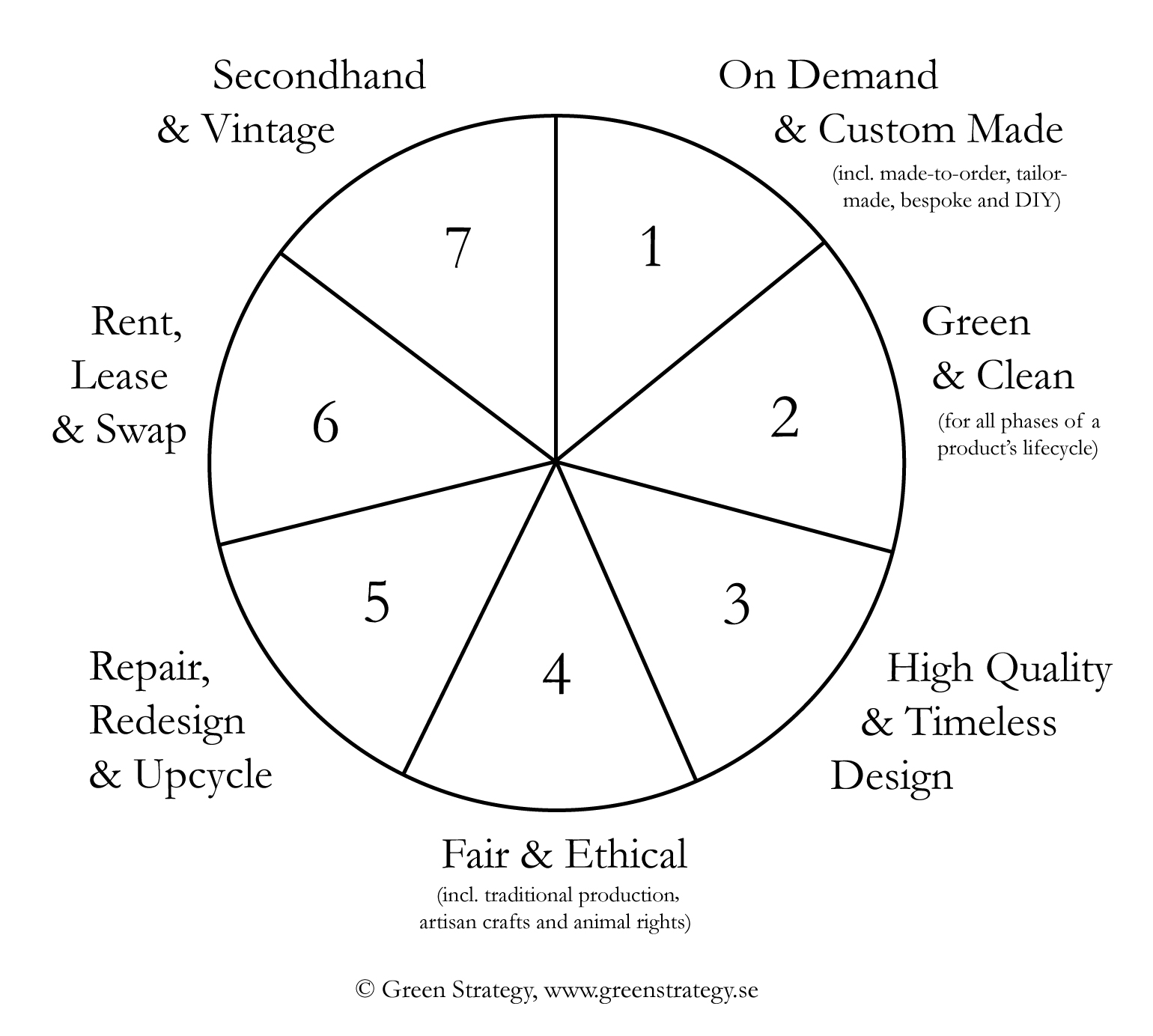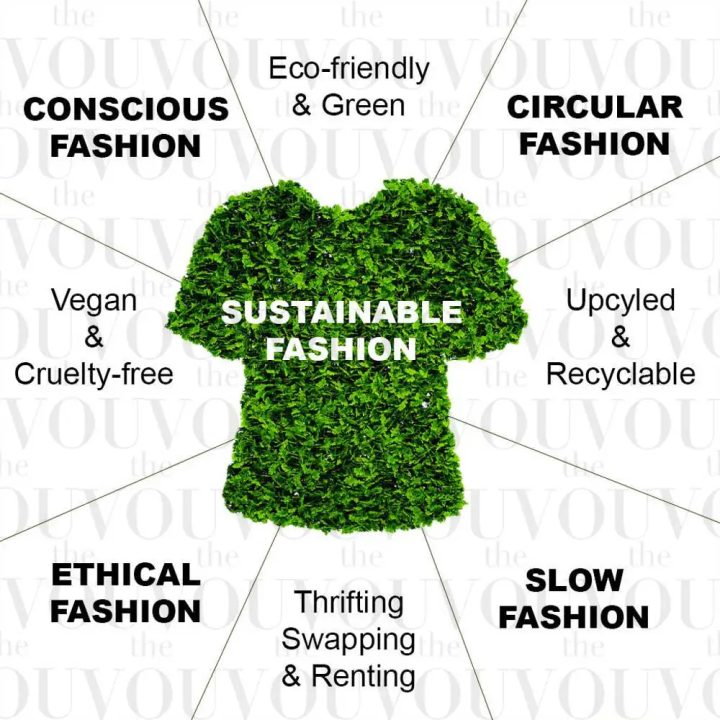Checking out the Surge of Cape Town Sustainable Fashion Brands
Wiki Article
Remain Ahead of the Curve by Checking Out Innovative Style Fads
In a market as dynamic as fashion, staying in advance entails greater than simply adhering to present patterns-- it demands an expedition of innovation. Smart fabrics, for circumstances, are transforming garments right into useful work of arts, while 3D printing is transforming design procedures with its personalized, waste-reducing abilities. As sustainability becomes a keystone, technologies like green products and circular style methods are reshaping ecological responsibility - Cape Town Sustainable Fashion. Furthermore, the merging of innovation and style advertises a new period of consumer involvement. Exactly how, then, can these arising trends redefine the future of style, and what ramifications do they hold for brand names seeking to grow in this progressing landscape?
Accepting Smart Textiles
Recently, the garment industry has seen a transformative shift with the combination of wise fabrics, a sophisticated innovation that blends technology with fabric. This evolution represents not only a fusion of aesthetic appeals and performance however likewise a considerable jump towards sustainability and personalization in fashion. Smart textiles, also referred to as e-textiles, embed innovative electronic devices such as sensing units and conductive strings within the material, allowing garments to communicate with the environment or the user.These fabrics are created to keep an eye on physiological parameters, such as heart price or body temperature level, supplying real-time health analytics. Beyond health and wellness applications, clever textiles are additionally being utilized for adaptive garments, which can transform color or pattern in action to ecological stimulations, thus offering a dynamic style experience.
Furthermore, the advancement of energy-harvesting textiles that create power from motion or sunlight is leading the method for self-sufficient wearable technology. This technology is attracting environmentally aware consumers and designers intending to decrease the eco-friendly footprint of style. As research study and development in this field breakthrough, wise fabrics are expected to come to be progressively prevalent, improving the landscape of modern style with their multifunctional capabilities.
The Surge of 3D Printing
Transforming the production landscape, 3D printing has arised as a game-changer in the garment industry. This cutting-edge modern technology has allowed developers to push the borders of creativity, generating intricate and personalized garments that were formerly inconceivable. By leveraging electronic design and additive manufacturing, 3D printing promotes the development of intricate geometries and patterns, allowing designers to explore brand-new textures and frameworks.A remarkable advantage of 3D printing in fashion is its capacity to produce on-demand, reducing waste and minimizing inventory needs. This effectiveness not just maximizes production processes however likewise enables rapid prototyping, enabling designers to bring their visions to life in a much shorter timeframe. Furthermore, 3D printing supports personalization somewhat unparalleled by traditional methods, providing individualized fits and one-of-a-kind layouts tailored to private consumer preferences.
The increase of 3D printing has likewise democratized fashion, making it available to emerging designers who can now fabricate top quality pieces without substantial financial investment in conventional manufacturing infrastructure. As technology continues to advance, the apparel industry is positioned to harness the full capacity of 3D printing, checking out new materials and strategies that will undoubtedly redefine how style is conceived and generated.
Lasting Fashion Developments
As the apparel industry faces journalism requirement for environmental responsibility, lasting style advancements have arised at the forefront of transformative modification. The growing awareness of eco-friendly effect has sustained a shift towards even more eco-conscious methods and materials. Brand names and developers are now focusing on sustainability, integrating methods that decrease waste and decrease carbon footprints.One substantial advancement is the surge of circular style, which highlights recycling and upcycling to extend the lifecycle of garments. This strategy not only lowers waste however also motivates consumers webpage to embrace a more conscious approach to apparel consumption. In addition, using lasting materials, such as natural cotton, hemp, and recycled polyester, has actually gotten grip. These materials call for less water and power throughout production, significantly minimizing ecological impact.
An additional breakthrough depends on the fostering of innovative dyeing techniques that use waterless processes or natural dyes, consequently lowering the vast quantities of water and chemicals traditionally utilized in textile dyeing. Moreover, advancements in biotechnology have resulted in the development of lab-grown natural leather and textiles, supplying cruelty-free and eco-friendly options to standard products. Via these introducing efforts, the fashion business is making significant strides in the direction of a much more lasting future.

Tech-Integrated Garments
Tech-integrated garments stands for an innovative combination of style and technology, reshaping how people connect with their apparel. This innovative domain name is noted by the inclusion of smart textiles and ingrained digital components, boosting both functionality and visual appeal. From fitness trackers installed in sports apparel to warmed jackets managed via mobile phone applications, tech-integrated garments provides customers extraordinary comfort and flexibility.Pioneering brand names are driving this fad, focusing on creating garments that reply to ecological stimuli or customer commands. As an example, some garments can transform shade or pattern in action to temperature level shifts, while others incorporate biometric sensors to check wellness metrics like heart price or stress degrees. The smooth assimilation of modern technology into fabrics likewise includes environmental sustainability, with efforts to establish self-cleaning materials or garments that get used to weather, therefore decreasing the demand for multiple layers.
Additionally, the advent of wearable innovation is not simply restricted to garments but encompasses accessories like watches and eyewear, further widening the scope of tech-integrated style. As the sector remains to introduce, the capacity for personalization and customization in garments grows, using consumers distinct, tech-enhanced fashion experiences that satisfy their individual demands and preferences.
Future of Virtual Style
In recent years, the future of virtual fashion has actually become a transformative pressure within the industry, leveraging developments in digital innovation to redefine just how style is produced, experienced, and eaten. By integrating augmented fact (AR), online truth (VIRTUAL REALITY), and 3D layout devices, developers can currently craft interactive and immersive experiences that go beyond conventional style borders. Virtual fashion permits the development of garments that exist exclusively in electronic atmospheres, supplying countless possibilities for development without the restrictions of physical production.This electronic change not just provides chances for innovative expression yet additionally addresses sustainability issues inherent in standard style techniques. Cape Town Sustainable Fashion. By getting rid of the requirement for physical sources, digital fashion decreases waste and decreases carbon impacts. Moreover, the rise of online style aligns with the raising consumer demand for customized and one-of-a-kind experiences, as virtual garments can be customized and tailored to individual preferences with simplicity

Verdict
The style sector's future lies in the assimilation of lasting methods and innovative innovations. Online style is poised to redefine consumer interactions.In current years, the fashion sector has seen a transformative shift with the combination of wise fabrics, a cutting-edge advancement that blends innovation Full Report with textile.As the fashion sector grapples with the pushing demand for environmental obligation, lasting style advancements have actually emerged at the this hyperlink leading edge of transformative modification.In current years, the future of virtual style has arised as a transformative pressure within the market, leveraging developments in electronic innovation to redefine how fashion is developed, experienced, and taken in. The increase of digital fashion aligns with the enhancing consumer need for individualized and unique experiences, as online garments can be customized and tailored to private preferences with simplicity.
The style market's future lies in the integration of ingenious modern technologies and sustainable methods.
Report this wiki page